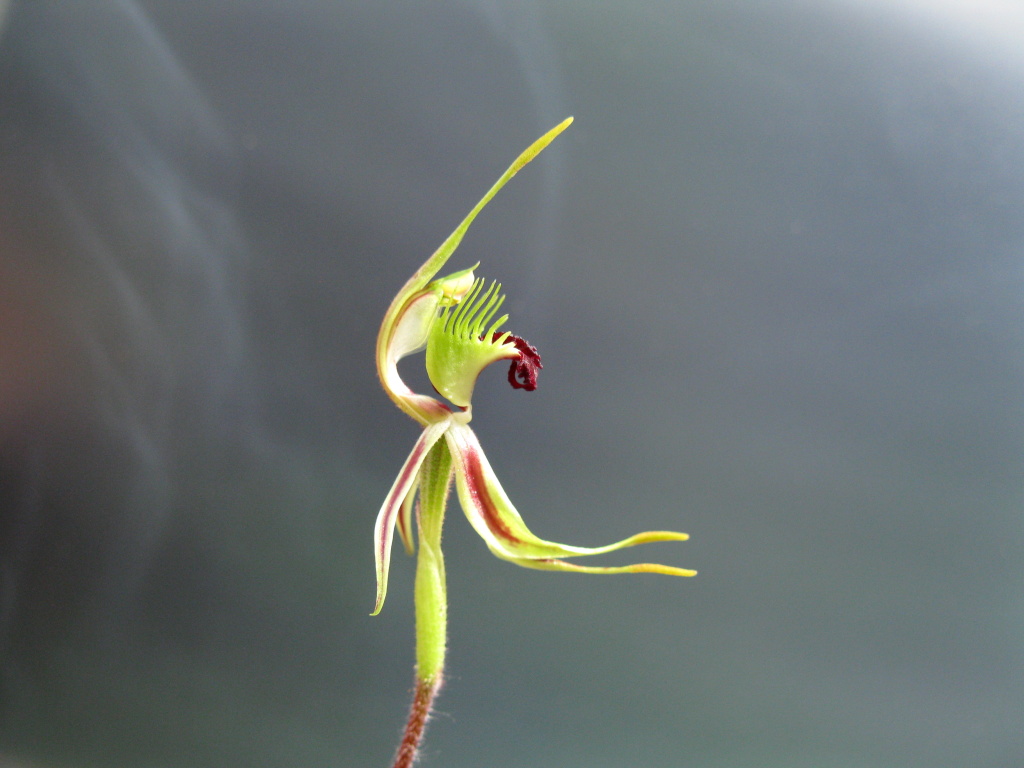Caladenia verrucosa
G.W.CarrFlowering plant 10–30 cm tall. Leaf 6–15 cm long, 6–10 mm wide, reddish at base. Flowers solitary; perianth segments 2–4 cm long, green with red central stripe; lateral sepals falcate, asymmetric, dilated at base, 2–3 mm wide, narrow and channelled toward clubbed tips, clubs prominent, 7–10 mm long, with bright yellow, sessile, contiguous glands. Labellum curved forward with lateral lobes erect and distal third strongly recurved, prominently 3-lobed, 11–14 mm long and 12–15 mm wide (when flattened), green with dark purple mid-lobe, sometimes with narrow white band in between; comb-teeth to 4 mm long, not rising above anther tip, mid-lobe irregularly and broadly toothed; lamina calli in 4 congested rows extending just onto mid-lobe, club-shaped, to 2 mm long, becoming shorter toward mid-lobe, swollen and verrucose apically, purple with dull brown upper surface. Flowers Sep.–Oct.
LoM, MuM, Wim, VRiv, RobP. Also SA, NSW. Widespread in semi-arid areas of north-western Victoria (e.g. Little Desert, Big Desert, Wyperfeld and Hattah Lakes National Parks), usually on deep sandy soils with mallee scrub.
Very close morphologically to Caladenia parva and differing significantly only in the bright yellow-coloured clubs, and in the labellum calli being more congested and having larger verrucose heads.
Entwisle, T.J. (1994). Orchidaceae. In: Walsh, N.G.; Entwisle, T.J., Flora of Victoria Vol. 2, Ferns and Allied Plants, Conifers and Monocotyledons, pp. 740–901. Inkata Press, Melbourne.
 Spinning
Spinning


